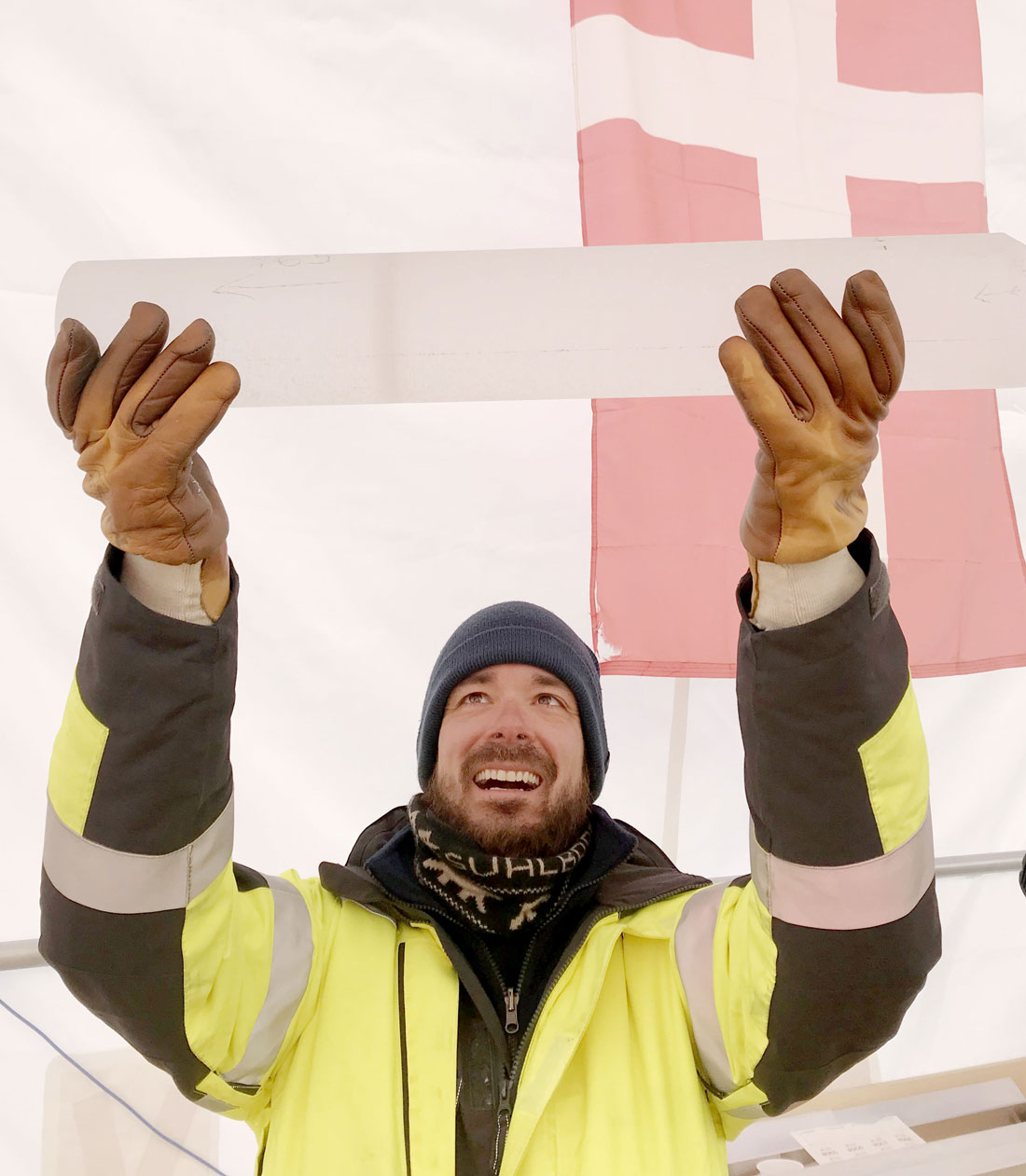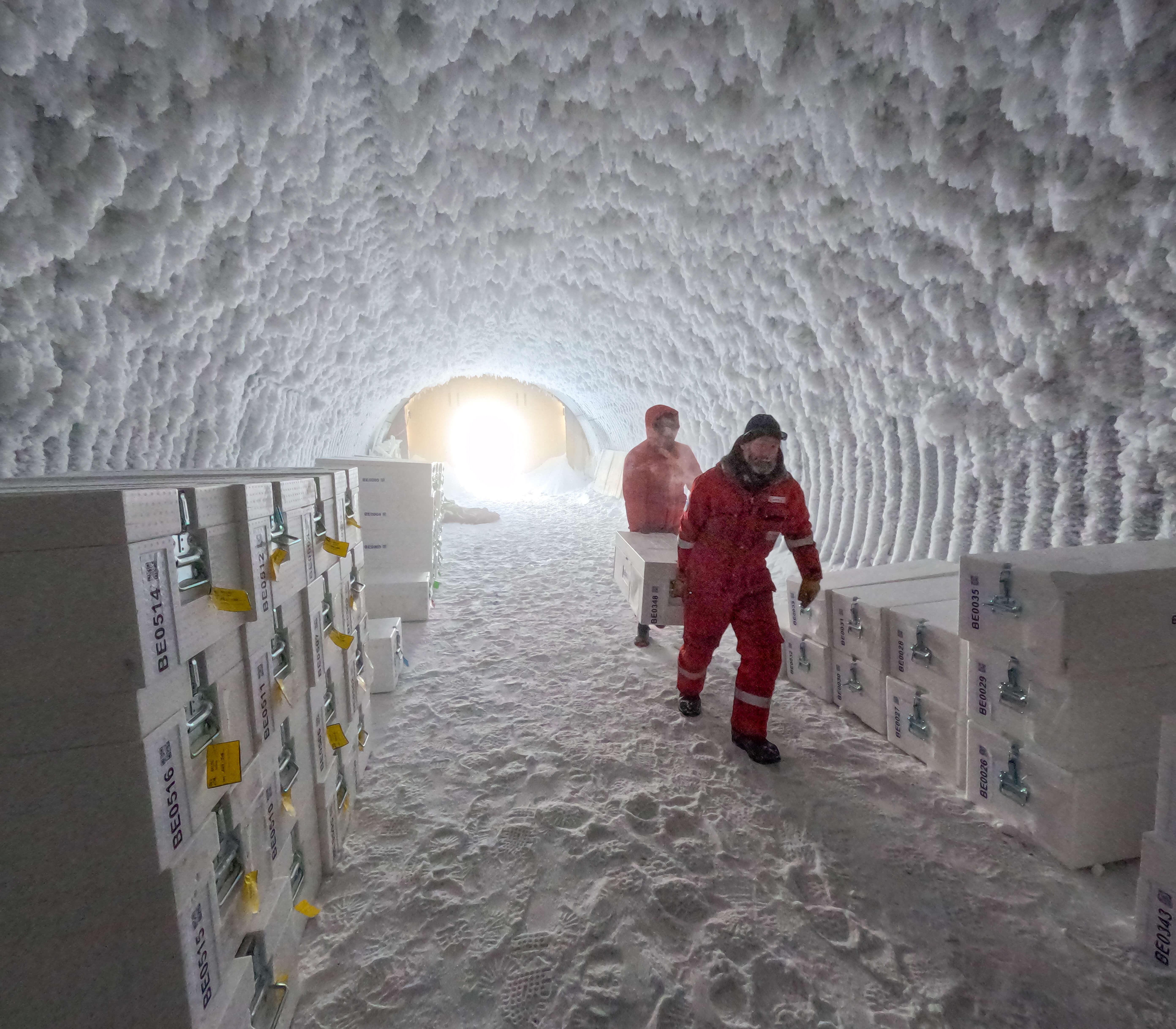Historic Drilling Campaign Reaches more than 1.2-Million-Year-Old Ice
An international team of scientists successfully drilled a 2,800-meter-long ice core, reaching the bedrock beneath the Antarctic ice sheet. These ice samples are expected to unveil, for the first time, critical details about Earth's climate and atmospheric history, extending beyond 800,000 years ago and showing a continuous record of the history of climate and greenhouse gasses as far back as 1.2 million years, and probably beyond
At the remote Little Dome C site in Antarctica, a research team representing twelve scientific institutions from ten European nations has just achieved a historic milestone for climate science.
As part of the European-funded Beyond EPICA - Oldest Ice project, the team successfully concluded a multi-year drilling campaign, reaching the depth of 2,800 meters, where the Antarctic ice sheet meets the bedrock.
The extracted ice preserves an unprecedented record of Earth’s climate history, continuous information on atmospheric temperatures and pristine samples of old air with greenhouse gases spanning over 1.2-million-year-old ice and probably beyond.
Historic moment for climate and environmental science
“This is a great moment for climate and environmental science. This is the longest continuous ice core record of past climate, and we hope it can reveal the interlink between our planet’s carbon cycle and temperature,” comments Dorthe Dahl-Jensen, professor at the University of Copenhagen and the University of Manitoba and chair of the ice core science consortium.
The scientists expect for the first time to unveil critical details about Earth's climate and atmospheric history that extend beyond 800,000 years ago.

1.2 million years in a high-resolution record
“From preliminary analyses recorded at Little Dome C, we have a strong indication that the uppermost 2480 meters contain a climate record that goes back to 1.2 million years in a high-resolution record where up to 13,000 years are compressed into one meter of ice”, reports Julien Westhoff, chief scientist in the field, postdoc at the University of Copenhagen.
The lowest 210 meters of the ice core consists of probably even older ice that is heavily deformed, possibly mixed or refrozen, and of unknown origin. Advanced analyses could reveal East Antarctica's glaciation history, which the researchers aim to unravel.
Being able to look more than a million years back in time makes a crucial difference in climate science
Around one million years ago, glacial-interglacial cycles slowed down from 41,000-year to 100,000-year intervals. The reasons behind this shift remain one of climate science's enduring mysteries. The researchers believe it is linked to greenhouse gases, which they can extract from the trapped air bubbles in the ice.

The ice drilling achievement was made possible through the extraordinary collaboration of various European research institutions and the dedicated work of scientists and logistical personnel in the field over the last ten years.
“Denmark, together with Germany and France, have provided the ice core drill used to drill the ice core and we are very proud of the successfully drilled ice core. It goes beyond our expectations and we are looking forward to tweezing the climate information from the ice cores together with all from the BEOI European team” concludes Dorthe Dahl-Jensen.
Contact
Dorthe Dahl-Jensen, Professor, Physics of Ice, Climate and Earth, Niels Bohr Institute, E-mail: ddj@nbi.ku.dk, Telephone: +45 35 32 05 56, Mobile: +45 22 89 45 37
Participants in the 2024/2025 campaign: Université Libre de Bruxelles (BE): Lisa Ardoin; University of Bern (CH): Barbara Seth and Lison Soussaintjean; AWI (DE): Matthias Hüther, Manuela Krebs, Gunther Lawer, Johannes Lemburg, Martin Leonhardt, and Frank Wilhelms; University of Copenhagen (DK): Julien Westhoff; CNRS (FR): Marie Bouchet and Ailsa Chung; IPEV (FR): Inès Gay; ENEA (IT): Danilo Collino and Michele Scalet; Cnr-Isp (IT): Federico Scoto.
The Beyond EPICA (European Project for Ice Coring in Antarctica) - Oldest Ice project, coordinated by the Institute of Polar Sciences of the National Research Council of Italy (Cnr-Isp), has been funded by the European Commission and supported by national partners and funding agencies in Belgium, Denmark, France, Germany, Italy, Norway, Sweden, Switzerland, The Netherlands, and the United Kingdom.
To learn more about Beyond EPICA Oldest Ice project: https://www.beyondepica.eu/en/
